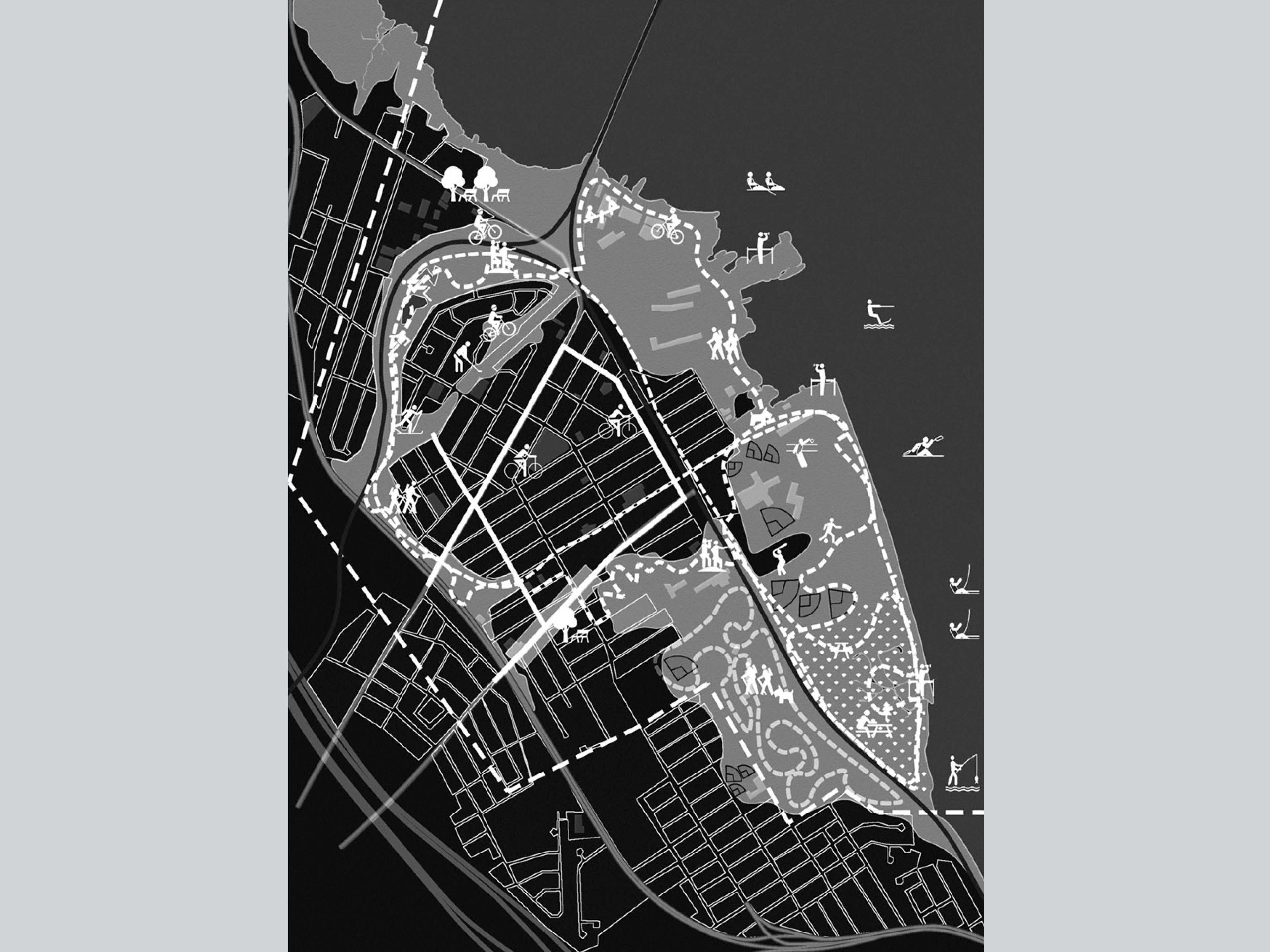Greenway—Slow Infrastructure
South Amboy, NJ
2007




When speed seems to be the pervading issue in every aspect of our culture, the notion of slow infrastructure might let us uncover questions obscured by the pursuit of speed. The focus on speed goes against the grain of urbanity which flourishes with slowness and the possibility of hanging out (the ultra-slow). Urbanity starts when speed slows down. Slow movement allows for seeing instead of looking, and therefore is the temporal condition of architecture (to see) and of urbanism and the urban gaze (to be seen).
The construction of the railroad in the nineteenth century produced one of the most important changes in the spatial and social organization of the US, the generation of new urbanity. The demise of a number of routes and services in the mid-twentieth century produced a ‘no-man’s’ land that cuts through towns and cities fragmenting them, separating districts and neighborhoods. It also produced a reserve of undeveloped land and an opportunity that the South Amboy Greenbelt (SAG) developed by Agrest and Gandelsonas, Architects, uncovers. The SAG recuperates 340 acres of undeveloped land adjacent to the railroad in the city of South Amboy, one of the stops of the New Jersey Transit Rail. The project proposes to transform the old semi-fast infrastructure of the railroad into a new type of slow infrastructure, a new green zone for walking, jogging, biking, rollerblading, skateboarding and horseback riding articulated by public spaces, sports and cultural facilities powered by clusters of wind turbines.
(read more)
The construction of the railroad in the nineteenth century produced one of the most important changes in the spatial and social organization of the US, the generation of new urbanity. The demise of a number of routes and services in the mid-twentieth century produced a ‘no-man’s’ land that cuts through towns and cities fragmenting them, separating districts and neighborhoods. It also produced a reserve of undeveloped land and an opportunity that the South Amboy Greenbelt (SAG) developed by Agrest and Gandelsonas, Architects, uncovers. The SAG recuperates 340 acres of undeveloped land adjacent to the railroad in the city of South Amboy, one of the stops of the New Jersey Transit Rail. The project proposes to transform the old semi-fast infrastructure of the railroad into a new type of slow infrastructure, a new green zone for walking, jogging, biking, rollerblading, skateboarding and horseback riding articulated by public spaces, sports and cultural facilities powered by clusters of wind turbines.